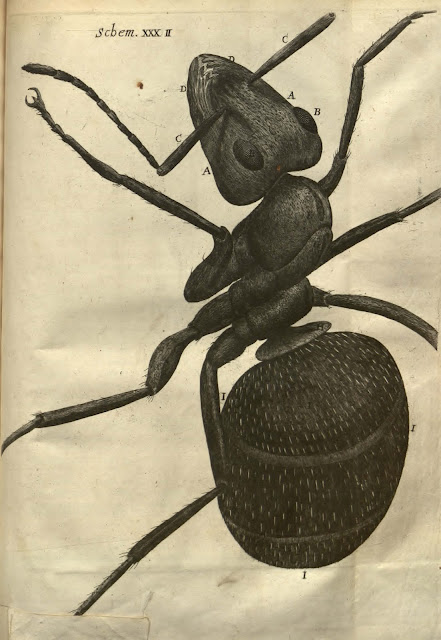Always felt the profoundest admiration for Robert Hooke. Probably was for me the better representative of that golden-crazy age of science revolution in all Europe during second part of 17th Century. Unfortunately Hooke was contemporary of Isaac Newton, who did more than much -his best- as president of the Royal Society to obscure Hooke's legacy and even memory (no authenticated portrait of Robert Hooke exists, and even this fact is attributed to Newton).
Hooke deduced that gravity follows an inverse square law, and that such a relation governs the motions of the planets, an idea which was subsequently developed by Newton. The complete compilation of correspondence between Hooke and Newton has been recently published: when Hooke started this letter exchange, he provided Newton a complete list of matters of his interest, and most important was about "compounding the celestial motions of the planetts of a direct motion by the tangent and an attractive motion towards the central body".
I always thought that the experiment related by Neal Stephenson on his historical fiction in which Hooke demonstrated that a dog could be kept alive with its thorax opened, providing pumped air in and out of its lungs was only fiction, but the real thing is that Hooke made this experiment with a helper and stayed pumping air during more than 20 hours, manually. Was in this experiment where Hooke noted difference between venous and arterial blood.
Other investigations and discoveries attributed to Hooke were about mechanics, microscopy (Micrographia), palaeontology (supported the theory that extinction was a fact, that was theologically unaccepted then), astronomy (studies about measuring distances to stars, using gamma draconis; studied lunar craters, observed rings of saturn, etc), and also Architecture (helped to tebuild London after the great fire of 1666).
For a high resolution, pdf version of this manuscript, contact me (facsimilium AT gmail DOT com).
 |
| Robert Hooke´s experiment on the respiration of a dog. Looks cruel but there's a marvellous consequence: the first clinically useful ventilator equipment was used, for pumping air into the trachea via tubes, based on Hooke’s principle 250 years later (two bellows to produce a positive pressure through rapid pumping). Experiment paper with conclusions should be available here. (Until July, 9th this link was broken. I reported to London Royal Society). |
Other investigations and discoveries attributed to Hooke were about mechanics, microscopy (Micrographia), palaeontology (supported the theory that extinction was a fact, that was theologically unaccepted then), astronomy (studies about measuring distances to stars, using gamma draconis; studied lunar craters, observed rings of saturn, etc), and also Architecture (helped to tebuild London after the great fire of 1666).
For a high resolution, pdf version of this manuscript, contact me (facsimilium AT gmail DOT com).




















